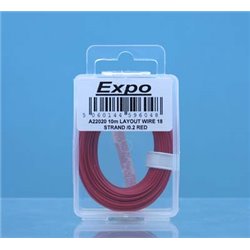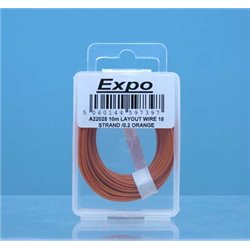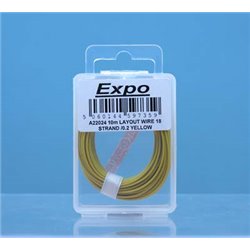Static grass puffer bottles work by manually charging model grass fibres with static electricity. When the charged...
No products
Product successfully added to your shopping cart
There are 0 items in your cart. There is 1 item in your cart.
Search Tips
What is the best size wire to use on my layout?
Wiring is sometimes a subject of wide debate amongst modellers. Each layout is unique with a wide range of aspects each having an effect including size, complexity and the range of items to be electrified including lights, points and signals. This can be a cause for confusion for new modellers as they wrestle with which wire will best suit their particular layout. To simplify the issue it is perhaps easiest, to categorise the size of the layout as small, medium or large. Small layouts can generally be categorised as being up to 8ft along their longest side. Choosing the wrong wire can result in insufficient current flow, leading to performance issues on the layout. Smaller layouts have shorter distances between the controller and the layout and so can use a smaller wire. Conversely, a larger wire will be needed on bigger layouts where cable runs are greater to combat the loss of current.
As a general rule of thumb, 16 Gauge wire (1.29mm) is ideal for smaller layouts, 14 Gauge wire (1.62mm) is recommended for medium layouts and 10-12 Gauge (2.5mm) is ideal for the largest layouts. Signals and lights require less power and as such can be fed by a smaller wire such as 23 Gauge (0.574mm). Inevitably attachment to the tracks will have to be by a feeder wire, as even 16 Gauge will be extremely difficult to effectively secure to a track. To simplify this issue the ideal feeder is 23 Gauge which is much easier to solder. Ideally, feeder wires should be no more than a few inches in length to avoid current loss issues.
One final consideration is the type of wire core. Solid cores are ideal for long straight runs but are not suitable in the case of significant twists and turns. In this instance, it is best to use a stranded wire core which will have greater flexibility and as such is better suited to dealing with twists and turns.
Click here to receive the tips weekly in your mailbox. You can unsubscribe at any time.










